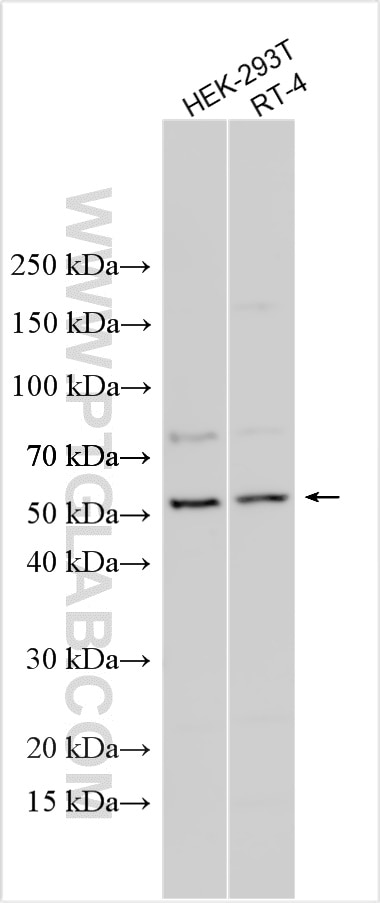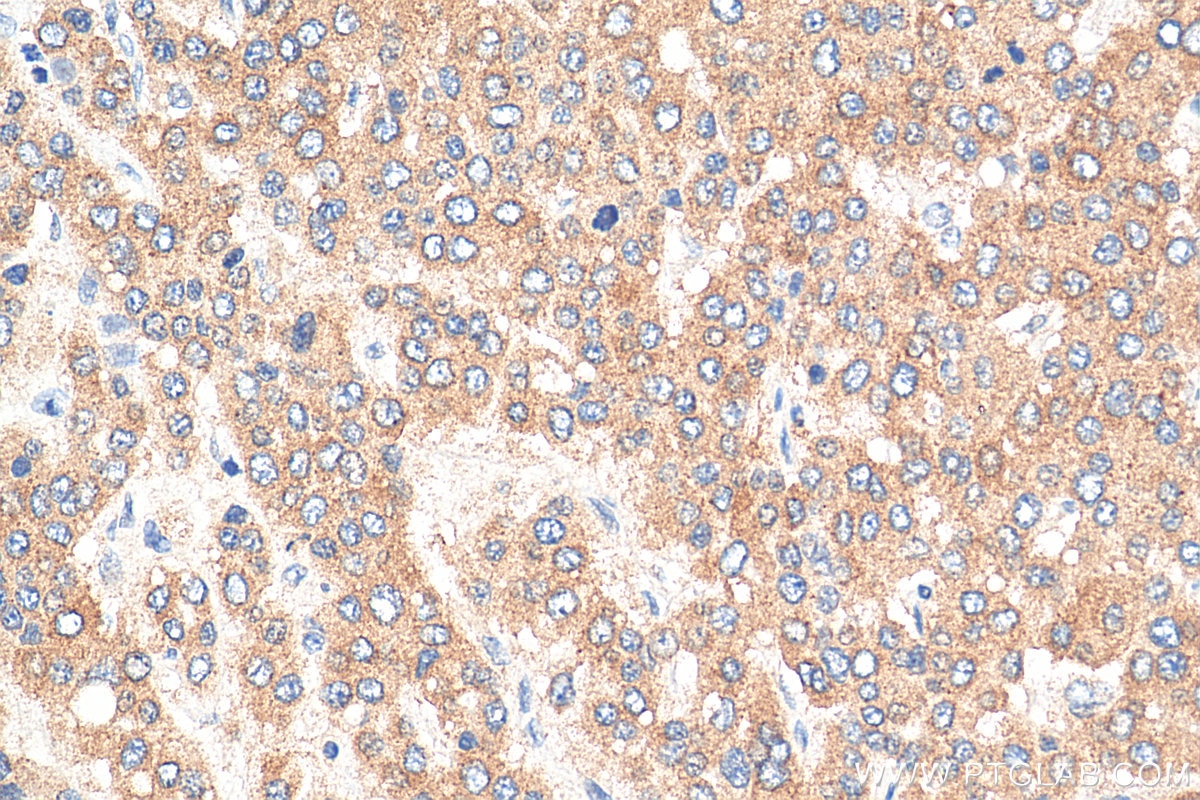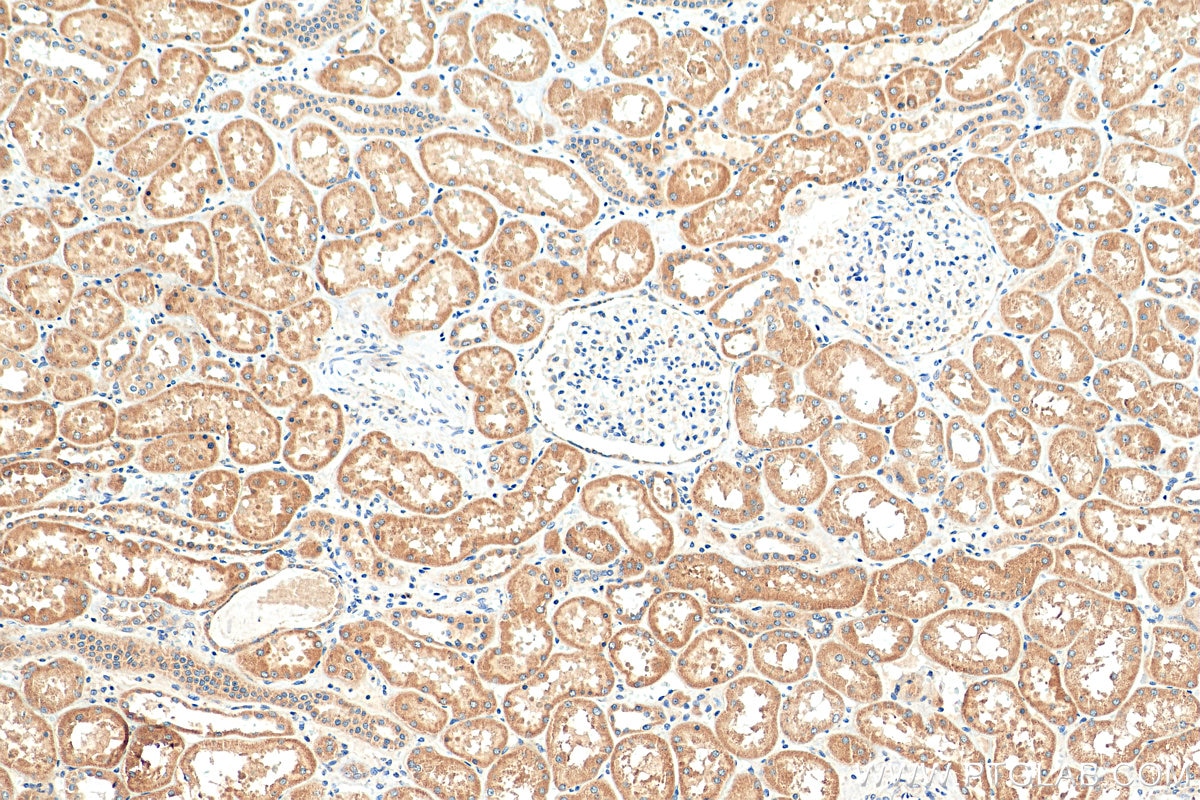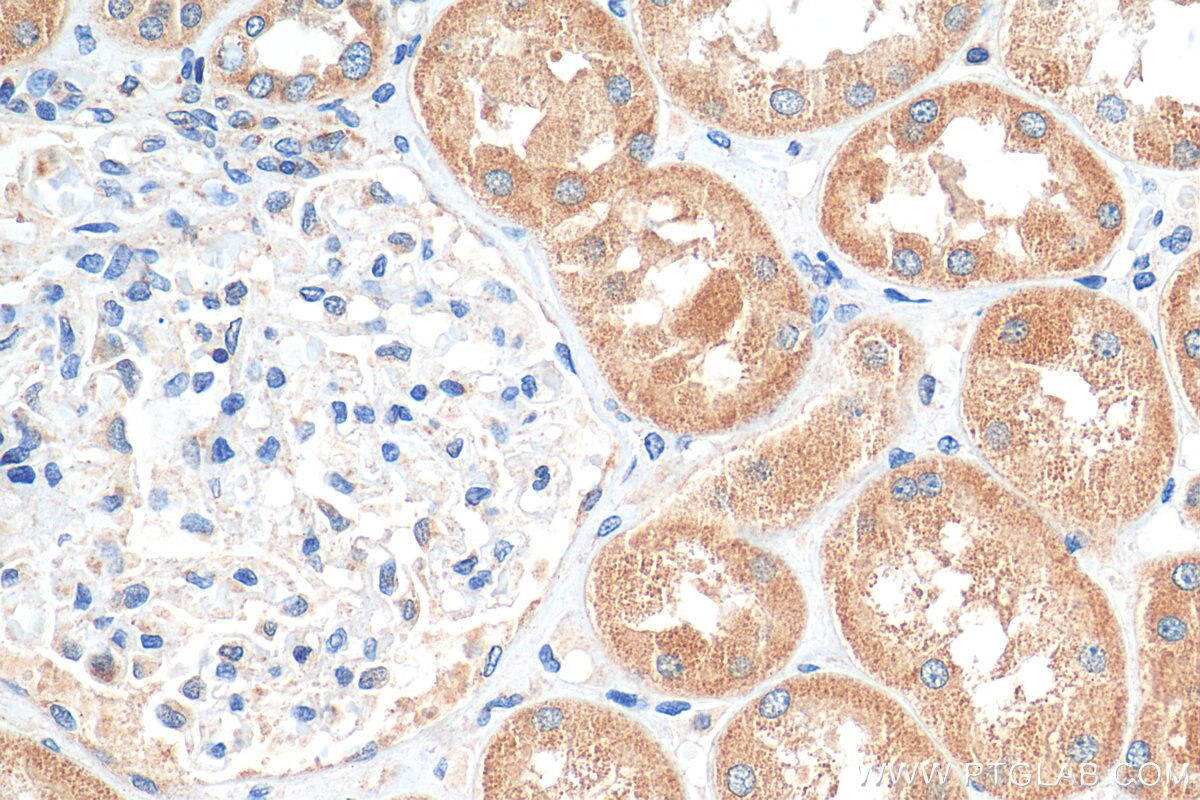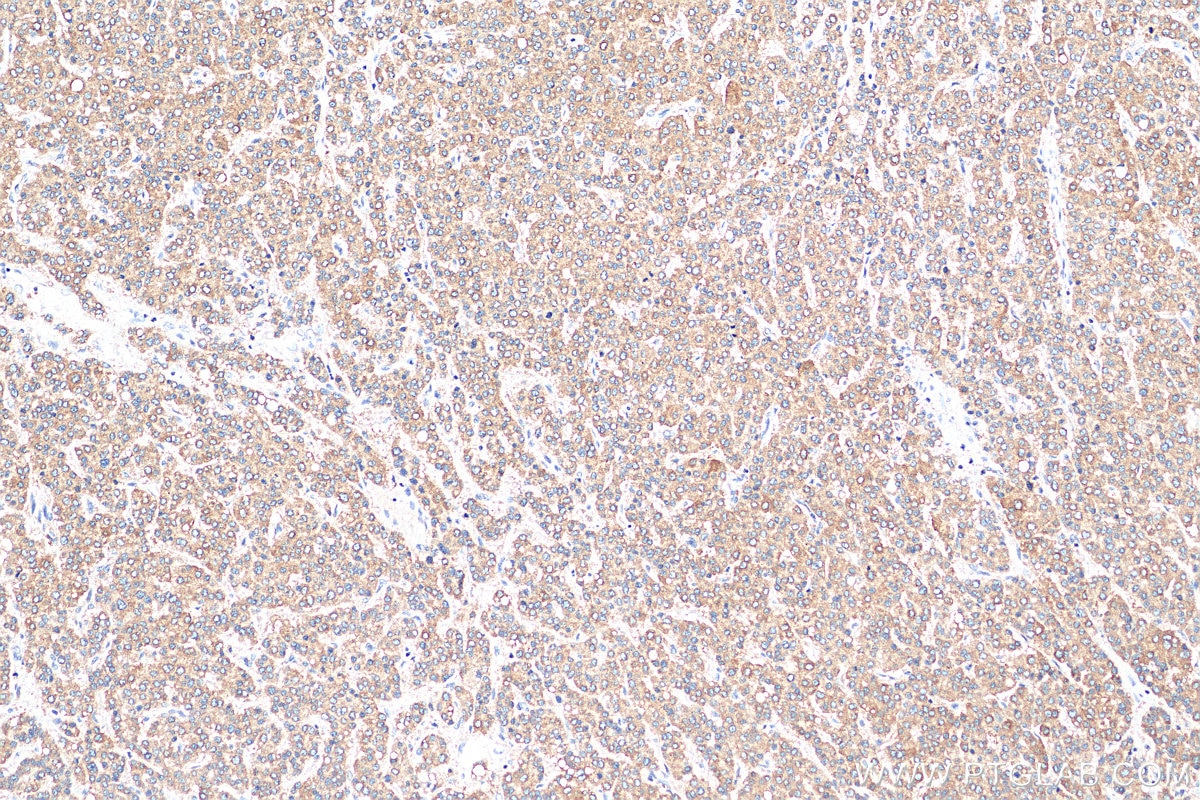Tested Applications
| Positive WB detected in | HEK-293T cells, RT-4 cells |
| Positive IHC detected in | human kidney tissue, human liver cancer tissue Note: suggested antigen retrieval with TE buffer pH 9.0; (*) Alternatively, antigen retrieval may be performed with citrate buffer pH 6.0 |
Recommended dilution
| Application | Dilution |
|---|---|
| Western Blot (WB) | WB : 1:500-1:1000 |
| Immunohistochemistry (IHC) | IHC : 1:50-1:500 |
| It is recommended that this reagent should be titrated in each testing system to obtain optimal results. | |
| Sample-dependent, Check data in validation data gallery. | |
Published Applications
| WB | See 2 publications below |
| IF | See 1 publications below |
Product Information
16496-1-AP targets GPR137B in WB, IHC, IF, ELISA applications and shows reactivity with human samples.
| Tested Reactivity | human |
| Cited Reactivity | human, mouse |
| Host / Isotype | Rabbit / IgG |
| Class | Polyclonal |
| Type | Antibody |
| Immunogen |
CatNo: Ag9633 Product name: Recombinant human GPR137B protein Source: e coli.-derived, PET28a Tag: 6*His Domain: 253-399 aa of BC012100 Sequence: YNLFILSFSQNKSVHSFDYDWYNVSDQADLKNQLGDAGYVLFGVVLFVWELLPTTLVVYFFRVRNPTKDLTNPGMVPSHGFSPRSYFFDNPRRYDSDDDLAWNIAPQGLQGGFAPDYYDWGQQTNSFLAQAGTLQDSTLDPDKPSLG Predict reactive species |
| Full Name | G protein-coupled receptor 137B |
| Calculated Molecular Weight | 399 aa, 46 kDa |
| Observed Molecular Weight | 48-52 kDa |
| GenBank Accession Number | BC012100 |
| Gene Symbol | GPR137B |
| Gene ID (NCBI) | 7107 |
| RRID | AB_2247856 |
| Conjugate | Unconjugated |
| Form | Liquid |
| Purification Method | Antigen affinity purification |
| UNIPROT ID | O60478 |
| Storage Buffer | PBS with 0.02% sodium azide and 50% glycerol, pH 7.3. |
| Storage Conditions | Store at -20°C. Stable for one year after shipment. Aliquoting is unnecessary for -20oC storage. 20ul sizes contain 0.1% BSA. |
Protocols
| Product Specific Protocols | |
|---|---|
| IHC protocol for GPR137B antibody 16496-1-AP | Download protocol |
| WB protocol for GPR137B antibody 16496-1-AP | Download protocol |
| Standard Protocols | |
|---|---|
| Click here to view our Standard Protocols |
Publications
| Species | Application | Title |
|---|---|---|
Bone A role for G protein-coupled receptor 137b in bone remodeling in mouse and zebrafish. | ||
Biochem Biophys Res Commun TM7SF1, an important autophagy regulatory protein in mouse podocytes. |

